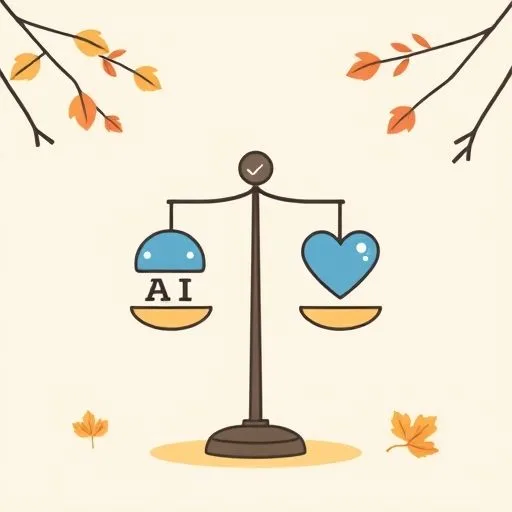
We’ve all seen that moment—haven’t we? When she’s leading a work call with one hand, using ChatGPT to explain a math problem with the other, and somehow still remembers to ask about the missing hamster. That quiet strength isn’t just resilience. It’s how she keeps our family connected while showing AI how to be a better helper. As parents, our job isn’t to fear the technology. It’s to help her shape it alongside us, making sure we teach it—not just use it. That’s how we’ve found balance.
How AI Became Our Family’s Helper

It’s not about replacing bedtime stories. It’s the way she’s shown me how tools like ChatGPT or Gemini can reduce homework time by 30 minutes—so she can have that extra 30 minutes to hear about their day. We’ve watched her set boundaries. She’s the one who taught me to ask, ‘Who’s actually helping you write this?’ when a kid’s homework helper AI seems to generate perfect paragraphs.
And it’s not just homework—she’s even trained AI to help with pending chores and soccer practice, but always with the same gentle phrasing she’d use herself. That’s the key. We’re not handing over our role. It’s about how we teach our devices to be more like us—more human.
We’ve heard about AI concerns, but her approach makes all the difference—treating AI as a tool, not a friend. We’ve found safety in the small, everyday habits. We check the ‘AI history’ like we’re checking homework. We ask about what they’re creating with AI tools. That quiet strength of hers—it’s built a world where AI isn’t raising our kids. It’s just another helper, vetted by her.
When She’s the One Who’s Trained the AI

We’ve noticed something. The best AI tools for parenting aren’t just time savers—they’re her way of offloading the mental load, not the connection. That evening, when she used the AI to help our son’s model of a volcano, but insisted on the paint and the messy glue and the laughter. That’s the balance.
Remember, when we first saw her use AI to generate a list of possible responses to that ‘teen grump’ phase? It wasn’t about copying. It was about turning the overwhelm into a moment where she could pause and pick the best words—not rip them from a search engine.
We’re mindful about keeping those real connections strong. She’s the one who’s set boundaries. AI can’t replace our bedtime chats, but it can help our kids’ tense schedule. That’s the way she’s taught us to use AI safely. Let’s make sure we know when it’s helping with stress relief—and when it’s becoming a crutch that steals our face-to-face time. We’ve seen how with her guidance—AI can grow our kids’ curiosity, not replace it. The key is keeping that balance.
As parents, we’ve all wondered—how much is too much? We found that balance when we started asking, ‘What’s the cost of this time saved?’
If the AI is helping us find a game plan for homework, but our kids are still learning from her—the real teacher, the one who knows their struggles—that’s the balance. When she’s used AI to collate healthy recipes, but still has our kids help prepare the dinner. That’s how we’ve taught AI to be a partner—not a parent.
The Quiet Strength That Keeps the Balance

We’ve seen her quiet strength. It’s the way she’s taught AI to be a tool. Our family’s AI isn’t a replacement for judgment. It’s a helper that’s been set to follow mom’s rules—like, ‘No, AI, you can’t suggest putting off the bedtime story to finish homework.’ She’s the one who’s decided that AI needs to be checked. We do it together on weekends.
We look at what our kids are using AI for—and more importantly, we’re teaching our kids to ask, ‘Does this actually help me understand?’ This isn’t just about safety. It’s about showing them how to use technology as a tool—not a boss.
Many of us have seen the ‘AI psychosis’—a term that throws fear into parents. But here’s what we’ve seen. That quiet strength she’s shown in managing tech use has made it so our family approach is different. We’ve taught our kids that AI isn’t a friend—it’s a calculator. A tool that’s great at facts, but terrible at asking, ‘What’s really going on today?’
It can’t replace her quiet strength—the way she knows when our kid is just ‘tired’ of homework, not struggling. We see that balance in her daily habits. She’s the one who’s taught us to use homework helpers, but to set screen limits. To use AI to brainstorm, but to create our own way. That’s how we’ve found balance.
Our family’s AI journey isn’t perfect. But we’ve seen how it can support her—not just replace her. As parents, let’s remember that we’re the ones who set the example. We teach AI to be a helper, not a parent. We let it help with the load, but we never let it take over our most important role—listening, hugging, knowing.
That quiet strength she’s shown in this balancing act? It’s what keeps us grounded, and AI is just a tool—like a good pen or a stack of sticky notes—that helps us along the journey. So, in the end, AI isn’t raising our kids. She’s teaching them to use it. And that’s the balance we’ve found together.
Source: Build a Custom AI Vibe Coding Platform in Minutes With Cloudflare & Chrome Dev Tools MCP, Geeky Gadgets, 2025-09-27
